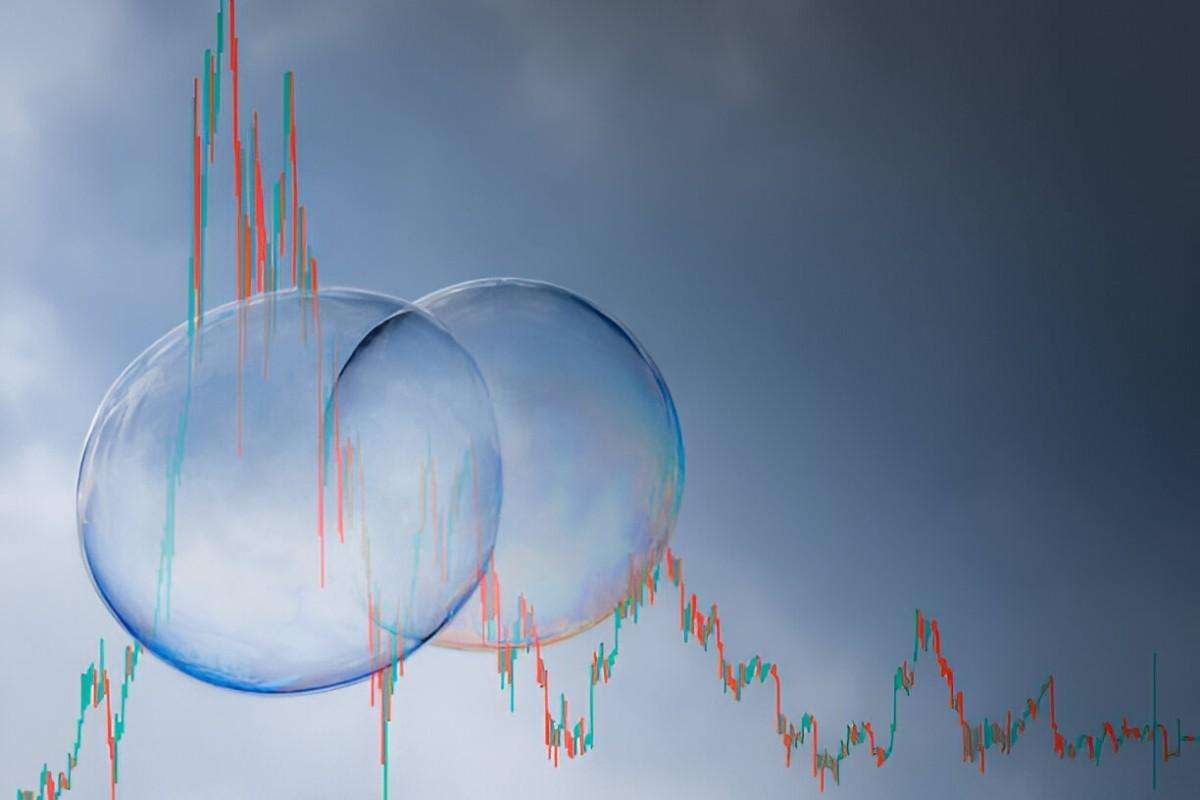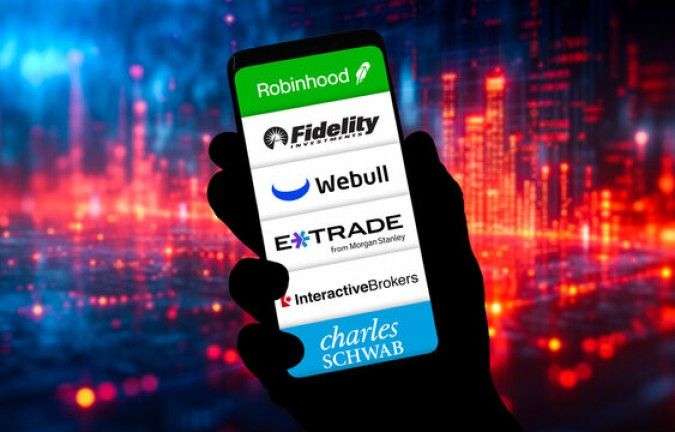When people think of the stock market, they often picture the exciting highs and terrifying lows of financial markets. But one phenomenon that has captured the imagination of many investors and analysts alike is the “stock market bubble.” It’s a term that gets thrown around a lot, especially when markets surge dramatically or crash unexpectedly. But what exactly is a stock market bubble? How do they form, and what can we learn from the ones that have popped in the past? In this article, I aim to provide a detailed look into stock market bubbles, using clear examples, illustrations, and practical advice to understand this complex and often misunderstood topic.
Table of Contents
What Is a Stock Market Bubble?
At its core, a stock market bubble occurs when the price of stocks in a particular sector or across the market increases to unsustainable levels. Prices soar beyond what can be justified by the company’s fundamentals, such as earnings, growth potential, and overall value. Bubbles are often driven by speculation, where investors buy into stocks not because they believe in the company’s long-term prospects but because they expect others to continue driving up prices.
Bubbles form when there’s a disconnect between stock prices and the actual value of the companies they represent. Investors continue to buy in, pushing prices even higher, until eventually, the market corrects itself, and the bubble bursts.
Key Characteristics of a Stock Market Bubble
I’ve spent a fair amount of time analyzing past market bubbles, and from what I’ve seen, there are a few key traits that tend to emerge:
- Excessive Speculation: When investors are overly optimistic about a stock or sector, they begin buying irrationally. This speculation fuels the bubble, making the market prices rise quickly.
- Overvaluation: Stock prices become detached from reality. Valuation metrics like the price-to-earnings (P/E) ratio, which measure the price of a stock relative to its earnings, become incredibly high. When the P/E ratio is abnormally high, it’s often a sign that the market is overvalued.
- Media Hype: The media plays a large role in amplifying bubbles. As prices rise, media outlets begin covering the success stories, making investors feel like they’re missing out if they don’t participate.
- Irrational Exuberance: Investors start to believe that prices will keep rising forever. This mindset is what economist Alan Greenspan famously referred to as “irrational exuberance.”
- A Sudden and Severe Crash: Bubbles eventually burst, often in a dramatic and unexpected manner. This can lead to a sharp drop in stock prices, wiping out significant portions of market value in a short amount of time.
Historical Examples of Stock Market Bubbles
To better understand how stock market bubbles work, let’s look at some famous historical examples. By examining the events leading up to and following these bubbles, we can uncover important lessons.
The Dotcom Bubble (1995–2000)
One of the most well-known stock market bubbles occurred during the late 1990s in the technology sector. The internet was becoming mainstream, and investors flooded into tech stocks, believing that the internet would revolutionize the world. As a result, the stock prices of internet-based companies soared, even though many of these companies had no proven business models or profits.
For example, companies like Pets.com and Webvan, despite having little to no revenue, saw their stock prices skyrocket. In 1999, Pets.com went public at a price of $11 per share. By the end of the year, it had risen to $87 per share. However, after the bubble burst in 2000, Pets.com saw its stock fall to nearly zero.
| Year | Pets.com Stock Price | Webvan Stock Price | NASDAQ Index |
|---|---|---|---|
| 1999 | $11 (IPO) | $29 (IPO) | 4,000 |
| 2000 | $87 | $90 | 5,000 |
| 2001 | $0.19 | $0.09 | 1,500 |
As we can see in the table above, the NASDAQ index was up significantly, but many of the individual stocks, like Pets.com and Webvan, dropped dramatically when the bubble burst. The dotcom bubble collapsed in 2000, and investors lost billions of dollars.
The Housing Bubble (2004–2008)
Another infamous bubble occurred in the housing market in the mid-2000s. Home prices were rising rapidly, fueled by easy credit and lax lending standards. Banks were offering subprime mortgages to people who could not afford them, and many investors were buying up homes, expecting that prices would continue to rise.
At the height of the bubble, homes were being sold at prices far beyond their true value. However, when the bubble burst in 2007 and 2008, it led to the global financial crisis. The housing market collapsed, and millions of homeowners faced foreclosure. The stock market, which was also heavily invested in real estate, lost trillions of dollars in value.
How Bubbles Form and Burst
A key question that often comes up is: Why do these bubbles form in the first place? The formation of a bubble is usually driven by a combination of factors, including a rapid influx of money, herd behavior, and the belief that prices will keep rising indefinitely.
The Formation Stage
During the formation of a bubble, there is often a new technological or economic development that gets people excited. For example, the dotcom bubble was fueled by the rise of the internet, while the housing bubble was driven by easy access to home loans. This excitement leads to increased buying, pushing prices higher.
The Euphoria Stage
As prices rise, investors begin to believe that the market will continue to go up indefinitely. They see others making money and don’t want to miss out. This is often referred to as “FOMO” (fear of missing out), and it can lead to irrational buying. At this stage, the bubble is at its largest, but the market is also the most vulnerable.
The Crisis Stage
Eventually, the bubble bursts. It can happen for a variety of reasons, such as an economic downturn, a shift in market sentiment, or simply the realization that stock prices are unsustainable. The crisis stage is marked by a sharp decline in stock prices, often leading to panic selling and widespread financial loss.
How to Protect Yourself from a Stock Market Bubble
Having studied stock market bubbles, I’ve come to realize that while they can be hard to predict, there are certain steps investors can take to protect themselves.
1. Diversify Your Portfolio
One of the best ways to protect yourself from the risk of a bubble is to diversify your investments. Don’t put all your money into one stock or sector. Spread your investments across different asset classes, such as stocks, bonds, and real estate.
2. Focus on Fundamentals
Always do your research and look at the fundamentals of the companies you invest in. Are they profitable? Do they have a solid business model? Are their stock prices in line with their earnings and growth potential?
3. Be Cautious of Overheated Sectors
If you notice that a particular sector is rising very quickly without clear justification, it might be worth exercising caution. For example, during the dotcom bubble, many technology companies were overvalued. Similarly, during the housing bubble, real estate prices were inflated.
4. Have an Exit Strategy
If you do find yourself caught in a bubble, it’s important to have an exit strategy in place. This might mean selling your investments before the bubble bursts or simply knowing when to walk away.
5. Stay Calm and Avoid Panic
Lastly, when a bubble bursts, it’s easy to panic. But remember that market corrections are a natural part of investing. Stay calm, stick to your strategy, and don’t let emotions dictate your decisions.
Conclusion
Stock market bubbles are fascinating, yet risky phenomena. They’re driven by speculation, irrational exuberance, and sometimes even greed. By studying the history of past bubbles, we can learn valuable lessons on how to avoid getting caught in the next one. Remember that the best way to protect yourself from the dangers of a bubble is to stay informed, diversify your portfolio, and focus on the fundamentals. In the end, investing is about long-term growth, and that’s something that can weather any bubble.





